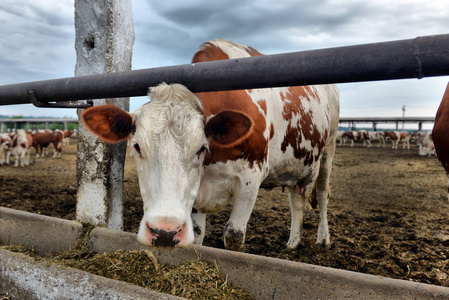What Farmers Have to Know About Alternative Protein Feeds
Let's say we eat the same lunch, day in and day out: burger, fries, and coke. Yes, they're delicious, but you get tired of that every day, not to mention the chickens, ducks, pigs and cows on your farm. They too crave a fresh and varied diet, not the same old soybean meal and corn.

Protein feeds are also a “delicacy” in the pasture. On the scene is insect protein. Don't worry, they won't crawl out of your kitchen. These little guys are nature's “scavengers”, eating agricultural waste and turning it into a high-quality source of protein. Yellow mealworms and gadflies are star performers in this category. They're like a lavish buffet for your pet chickens, rich in nutrients and environmentally friendly. Microorganisms like yeast produce large amounts of protein through fermentation. Microbial proteins are like the invisible superheroes of the farm, providing animals with high-quality proteins without the need for additional land and water. Algae proteins are attracting attention as an emerging alternative protein feed. These “emeralds of the sea” not only provide a rich source of nutrition but also make an important contribution to environmental protection.
The protein content of different species of seaweed, such as spirulina, brown algae and red algae, usually ranges from 10 to 50 per cent. Some species even exceed the protein content of soybeans. Thus, seaweed protein provides an efficient and high-quality source of protein for animals, which helps promote their growth and health. In addition to its high protein content, seaweed is also rich in Omega-3 fatty acids, a nutrient that is essential for animal health. For animals, an adequate intake of Omega-3 fatty acids improves their immunity and reduces the incidence of disease, which in turn improves productivity.

Using seaweed protein as feed is not only good for animals, but also has a positive impact on the environment. Seaweeds do not require fresh water or fertilizers to grow, only sunlight and seawater, which greatly reduces the consumption of natural resources. In addition, seaweed absorbs carbon dioxide through photosynthesis, helping to reduce greenhouse gas emissions and contributing to climate change mitigation. Farm animals also receive a mysterious gift from the deep sea - seaweed proteins, which are a “marine nutritional feast” on their tables. These seaweed proteins are like carefully prepared “ocean essence milkshakes”, each bite contains the breadth and nourishment of the sea. The piglets ate them with great relish, and after eating these “ocean emeralds”, their bodies became healthy and strong. Seaweed protein not only nourishes the piglets' bodies but also reduces the burden on the environment, making it a wonderful two-for-one choice!
Single-cell proteins may sound a bit esoteric, but they are produced by culturing single-celled organisms, such as certain fungi and bacteria. These microscopic Hercules can proliferate rapidly, providing a steady and efficient supply of protein. They are like workers in a cellular factory, silently producing high-quality protein.
Finally, let's take a look at cellulose-degrading bacteria, which are capable of converting agricultural wastes such as rice straw and corn stover into protein. These bacteria are like superheroes in a garbage disposal station, turning seemingly useless waste into tasty treats for animals.

Alternative protein feeds not only give animals a nutritious diet but also reduce their environmental impact. It's like a unique culinary adventure for your family's chickens, ducks, pigs and cows, allowing them to grow up healthy while contributing to the sustainability of the planet.
(Writer:Juliy)




